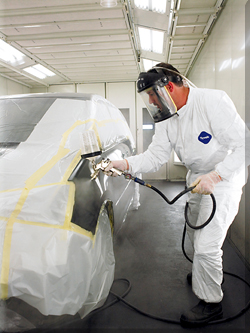Oct 14 2008
Fourteen million pounds of air emissions have been eliminated annually since tens of thousands of auto collision repair shops in more than 30 countries began using DuPont water-based paints rather than traditional solvent-based coatings, according to DuPont environmental data.

Paints that use solvents as a curing mechanism emit volatile organic compounds (VOC) and other substances as they dry. VOC's are one of many substances that can contribute to the formation of ground-level ozone or smog. Based on standard calculations of paint use in collision repair shops, DuPont scientists estimate that the switch to waterborne coatings prevents nearly 10 million pounds of VOC emissions. Similarly, more than four million pounds of "hazardous air pollutants," or HAPs, are eliminated. U.S. Congress has identified more than 188 HAPs which, under certain circumstances, may cause adverse health and environmental effects.
"The highest concentration of shops converted to waterborne finishes is in Europe, where environmental regulations have long required the use of these products," said John McCool, vice president and general manager, DuPont Refinish Systems. "We expect the numbers to increase substantially in parts of California, Canada, South Korea, Hong Kong and other areas as regulations take effect."